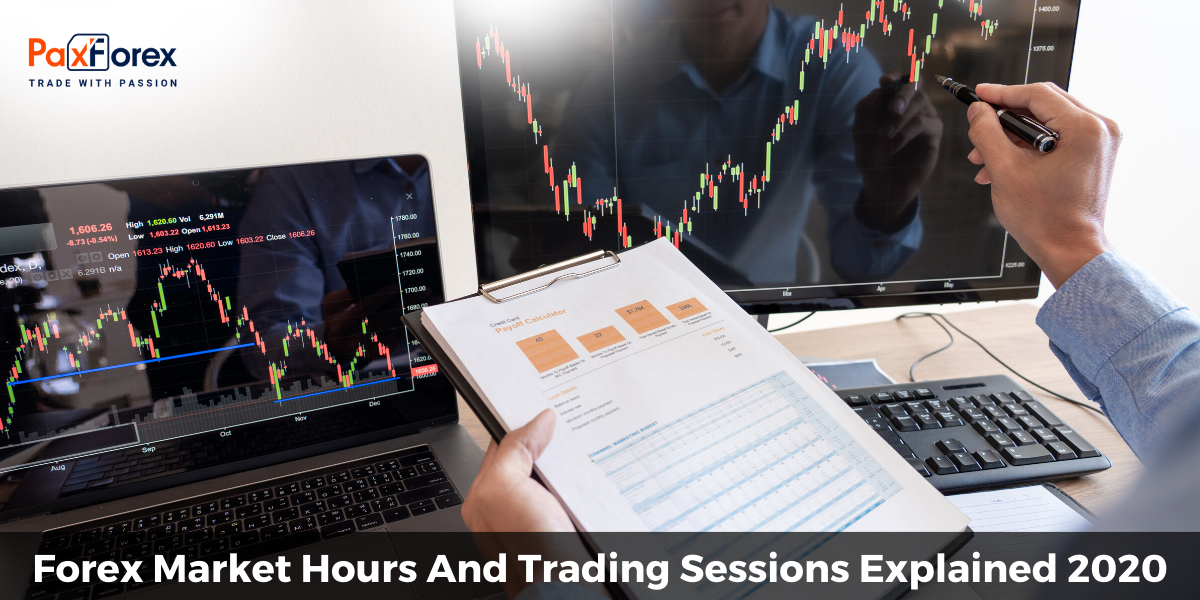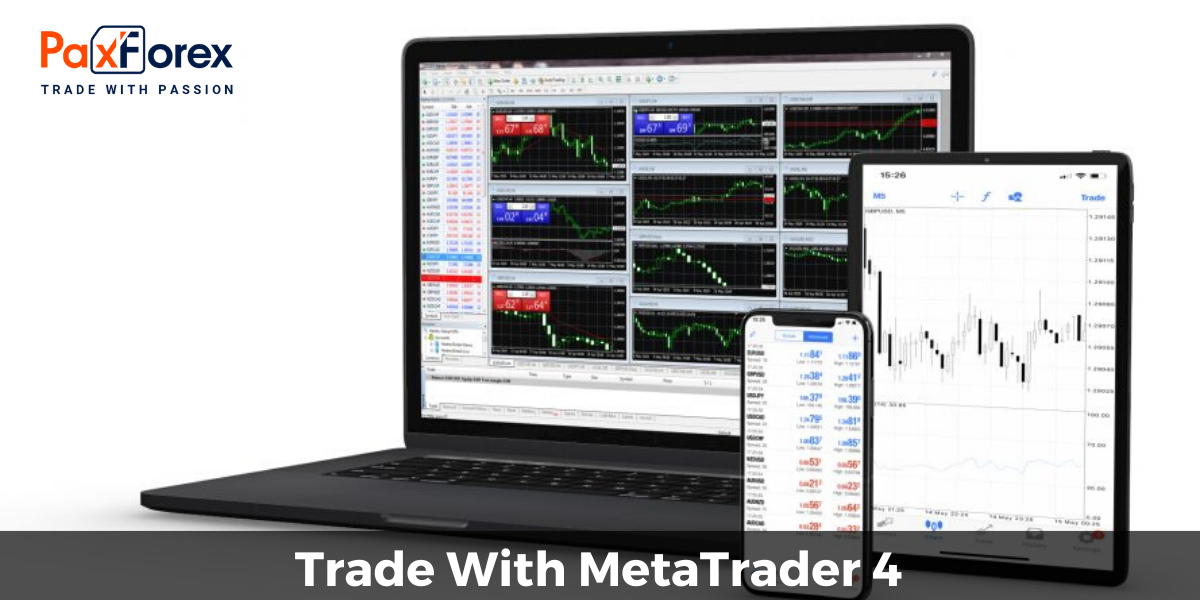
Trading on Forex is very straightforward in theory. Traders generate profit from exchanging foreign currencies that constantly fluctuate in value. However, in order to become truly successful, you will need to account for a certain amount of factors that contribute into the overall movement. One of such contributors is the Forex market hours. More specifically: the time limits of activity for traders all across the globe, commonly known as Forex trading sessions.
The Introduction To Trading Sessions
It is common knowledge that Forex operates 24 hours a day, five days a week. The main reason behind this round-the-clock activity is various time zones around the world. By continuously working foreign exchange market equally includes trades from every corner of the planet.
Following this logic, we can also conclude that a trader from Tokyo will most likely be trading during different hours compared to a trader from Berlin, for example. That’s how Forex trade sessions came to exist.
A Forex trading session is a period of time at the market, when a high amount of traders from the same geographical location become active. While Forex market hours remain the same for everyone, sessions occur at different times and tend to have a set of distinguishable characteristics.
It is also worth mentioning that each trading session Forex period might be strongly associated with a specific currency. This way, a trader from the US who is interested in trading European or Asian currencies might have to pay more attention to non-domestic trading sessions. Needless to say, trading outside your local Forex market hour can lead to being awake during odd hours, so it is generally connected with higher stress.
So, you get the gist: traders around the world trade during different hours and this is referred to as Forex trading sessions. But why do we need to know the specifics of how Forex market hours clock works in other countries in order to become successful?
Having a general understanding of each of existing trading sessions Forex and watching how those sessions progress, can help traders predict the market movement in their own time zone. Simply said, traders watch and very often mimic each other’s actions.
That’s why knowing and fully comprehending market Forex hours across the map can significantly help in trading wisely.
Now, let’s talk about each of the major Forex trade sessions to get a better picture.
Usually, traders differentiate three major trading sessions Forex: Asian, European and North American. Due to the geographical proximity of Europe to North America, there is also a short, but highly attention-worthy session overlap between their two sessions.
Sometimes, you might also hear traders refer to less-common trading sessions, such as Sydney or Hong Kong. But while the Forex market hours in these areas are slightly outside the general session, they very often behave in accordance with an entire region. This means that studying a very localized Forex trading session may be a part of your plan in the future, but for now let’s focus on the major trading sessions, starting with the Asian one.
Asian Trading Session Or Tokyo Session
Every trading session Forex is often referred to by the name of a major city in the area. Asian session is most commonly called Tokyo session and it lasts between midnight GMT until 6 AM GMT.
However, since Asia includes a whole variety of countries and time zones, from New Zealand to Russia, the market forex hours are sometimes stretched into 11 PM GMT to 8 or even 9 AM GMT.
As Tokyo market opens first after the weekend it is usually an excellent indicator of the overall mood for the week in the whole world. But there are a few characteristics, which make the Asian session like no other, and they are:
Low liquidity. Since the day starts from the East, it is no surprise that the rest of the world is still asleep when trading starts in Asia. This results in Tokyo Forex market hours being associated with a lower number of traders. In general this can mean two things: non-Asian currency pair traders will not make any visible profit during the Tokyo hours and also the flow of things is going to be rather calm.
Low volatility. As a result of low liquidity, the market tends to behave less aggressively during the Tokyo market hours Forex. While it is true that lower volatility might be not as profitable, it brings a certain level of comfort to local traders due to the ability to observe and analyze deeply.
Clear entries and exits. Another one of the main characteristics of the Asian Forex trading session is high respect towards support and resistance levels. In combination with thorough analysis and some effective trading indicators, the Tokyo session can provide a good amount of transparent and convenient exits and entries.
Comfortable risk management. All of the above contribute into the next characteristic, the ability to comfortably manage trading risk. During any other Forex hours market activity, decision-making process associated with risk is much more fast-paced due to escalated amounts of liquidity and volatility.
More opportunities after close. Towards the end of the Asian session it overlaps with the beginning of trading in London. More often than not, the very common market behavior for this overlap is a breakout from an established range which presents traders with a whole set of brand-new opportunities.
Trading during the Asian session can be a comfortable start for new Forex traders. One thing to keep in mind is that your chosen currency pair will have to include one of the major Eastern currencies, such as JPY or AUD.
Next, let’s discuss the Forex market hours in Europe, which overlap with both Tokyo and New York sessions.
European Trading Session Or London Session

London Forex markets hours are a big deal. Nearly half of all currency exchange transactions take place during the European session. And this is not at all surprising: the capital of England has always been the trade center due to its location.
Plus, the convenient timing of the European Forex trade sessions is inclusive for pretty much the entire world. This way the London session overlaps with Tokyo at the beginning and with New York towards the end.
The European trading session is often defined as 7 AM to approximately 5 PM GMT. Most large financial contributors into Forex step into the game during this session, as apart from London, European region is also home to Switzerland, Germany, France and Netherlands.
Now, here are some characteristics of the European market forex hours:
The highest liquidity. Unlike the generally exclusive Asian trading session, London welcomes all. With the escalated amount of traders of every possible caliber, from individuals to large corporations, all currency pairs are actively traded during the European Forex market hour frame. This can be interpreted as a tremendous pool of available opportunities.
High volatility. Increased volatility is basically bread and butter of any short-term trader and London session is the go-to time for most fast-profit strategies. With that said, the amount of risk associated with each trade respectively increases. Traders who focus their attention on London hours have to perfect their risk managing skills in order to be successful.
Lower spreads. Another side of the volatility coin is the narrowing of spreads between the bid and the ask prices. Especially, during the overlaps periods, the great number of traders continuously process trades which results in the decrease of spreads and even more activity.
Great base for fundamental analysis. As mentioned before, many financial giants activate during the London session. Which means that European Forex market hours often intercross with major economical data report releases. Traders who base their decisions primary on fundamentals and sentiment have lots of opportunities to catch the wave of initial reaction to each particular news.
The slow period. Despite the overall high liquidity and volatility, the London session is also associated with a short period of decreased volume known as the Lunch session. From approximately noon to 2 PM GMT, traders and brokers everywhere break for a mid-day meal leaving the market calmer than usual. This can be viewed as a great chance for traders to take their time analysing and planning the upcoming moves.
Trend check-point. Trends often begin or reverse during the London session. The started trend will very likely roll onto the New York market, which means that USD traders have to closely watch the charts for indications of trends prior to starting to trade. Reversals occur when the majority of traders choose to lock in their profits, and this will usually reflect at the chart.
Forex market hours clock in London seems to move faster than anywhere else in the world due to the increased activity. Traders who focus their attention on the European session are more likely to succeed, provided they did their homework and meticulously prepared for each step.
And as the London session comes to an end, it meets with the North American Forex hours market gap.
North American Trading Session Or New York Session
Frank Sinatra’s favorite city, New York, is another financial capital of the world. That’s why it makes total sense that nearly a quarter of all Forex transactions take place during the North American trading session.
Unlike the Asian session, New York overlaps with London for around four hours, which gives traders plenty of time to keep riding established trends and take advantage of the same currency pairs.
Then, of course, the national currency — the United States Dollar is the most traded unit at the Forex market. Almost 85% of all trades during the New York session are focused around the greenback. This makes North American Forex markets hours especially attractive to virtually any trader out there.
The New York session is established roughly between noon and 8 PM GMT. The North American market hours Forex traders include people from the US itself, as well as from Canada, Mexico and all South American countries. Which means that during this session currencies like CAD and MXN also come out to play.
Here are a few things that characterize the American Forex market hour gap:
Fundamental significance. Since most trades worldwide involve USD, it is very logical that American economic releases are expected with higher interest than pretty much anywhere else. Most currency related data is released in the morning, which translates to approximately 2 PM GMT and generously overlays with the European session. However, FOMC meeting protocols are usually released around 6 PM GMT and the New York session traders have got a first row seat compared to others.
Mixed volatility. The most volatility during the New York Forex market hours is observed during the overlap with London. However, after both Asian and European traders retire, the North American trading scene gets rather quiet. Especially on Friday evening, when the market is about to close for a week. During this period it is generally advised to novice traders to avoid trading as much as possible, due to higher risk exposure.
Currency variety. Even though USD seems to be the center of attention during the New York market hours on Forex, every currency pair can be profitable because of the high liquidity. This makes the beginning of the North American session a perfect time for short-term traders with any currency pair preferences.
Now, that you have a general understanding of each of the Forex trading sessions, let’s take a few moments to discuss the trading platform that connects traders from Sydney to Seattle.
Trade With MetaTrader 4

What is the most important tool of a modern Forex trader? There is only one possible answer: the trading platform. Foreign exchange market today is more demanding than ever. It calls for fast thinking and even faster acting.
Metatrader 4 allows you to be one step ahead of everyone by being the most sophisticated and yet the easiest to use trading platform. From analysis to gathering profits, MT4 has the tools to complete any task.
No matter which trading strategy you adopted and during which market Forex hours you choose to trade, Metatrader 4 has got you covered. Install the platform today to experience hi-tech trading from the comfort of your couch.
Overlaps In Forex Hours And Sessions
We’ve already briefly discussed trading session overlaps that lead to increased volume and volatility at the market. Now it would make sense to summarize a couple of facts that will help you navigate through the confusing periods of high activity.
The two most important overlaps are Asian/European and European/North American.
Tokyo overlaps with London from about 7 AM GMT until just one hour later: 8 AM GMT. During this hour you will observe high liquidity of cross-continent pairs, such as GBP/JPY. It goes without saying that successful trading during Asian/European overlap, requires solid understanding of major economic contributors as well as professional skills in chart reading.
London overlaps with New York from approximately 1 PM to 5 PM GMT and it is generally the time when most trades take place. The biggest concern of any trader who is focusing their attention around American and European Forex hours market overlap is the high level of risk associated with high volatility. Thought-through risk management is vital during any trade, but during this particular overlap — especially.
At this point we know how the trading goes during active time sessions around the world. But are there any times when the market is too risky to trade?
Non-Trading High Risk Forex Market Hours
There are three things that contribute into the market being non-tradable: low liquidity, volatility spikes and high spreads. Low liquidity puts traders at great risk due to a lower chance of effective processing of voluminous transactions. This means that trades opened during low liquidity periods have a very high chance of going south.
Low liquidity is also dangerous because of the way market moving power gets distributed. This results in volatility spikes that can be harmful to your risk prevention tactics, such as stop loss orders: the price will simply jump over them.
And finally the high spreads that often occur during the least active times can really eat into your profits, sometimes eliminating them completely.
Considering all of the above, professional Forex traders have outlined the period between 12 AM and 2 AM, local time to any trader. During these two Forex hours market behaves in the least favorable way and is strongly recommended to beignored.
And what is the best part on the Forex market hours clock to trade?
The Best Time To Trade The Market
In order to choose the right Forex market hour for your trades, you will need to consider a few factors. First, settle on one or two currency pairs you are going to actively trade. Successfully operating with any currency pair requires a certain amount of knowledge of both technical and fundamental aspects behind the price formation of the unit.
Then you should soberly evaluate your schedule to outline your windows of availability. This way, even if Asian Forex markets hours seem ideal, but you are either sleeping or working throughout them, it will most probably not be a good idea.
Lastly, the first three hours of each session are usually the most fruitful ones. The beginning of the session is a good mix of decent volume and volatility, as well as indicated momentum, trends and retracement.
Plus, the first and the last five minutes of each hour within each Forex trading session would normally stand out with increased volatility. This is often referred to as TOTH (top of the hour).
Conclusion
Knowing when to trade Forex is a must for anyone who aims to be successful. Whichever trading session Forex you end up focusing on, make sure you start by understanding the mechanics of its operation as well as the major driving factors behind the central currencies for that specific region.







